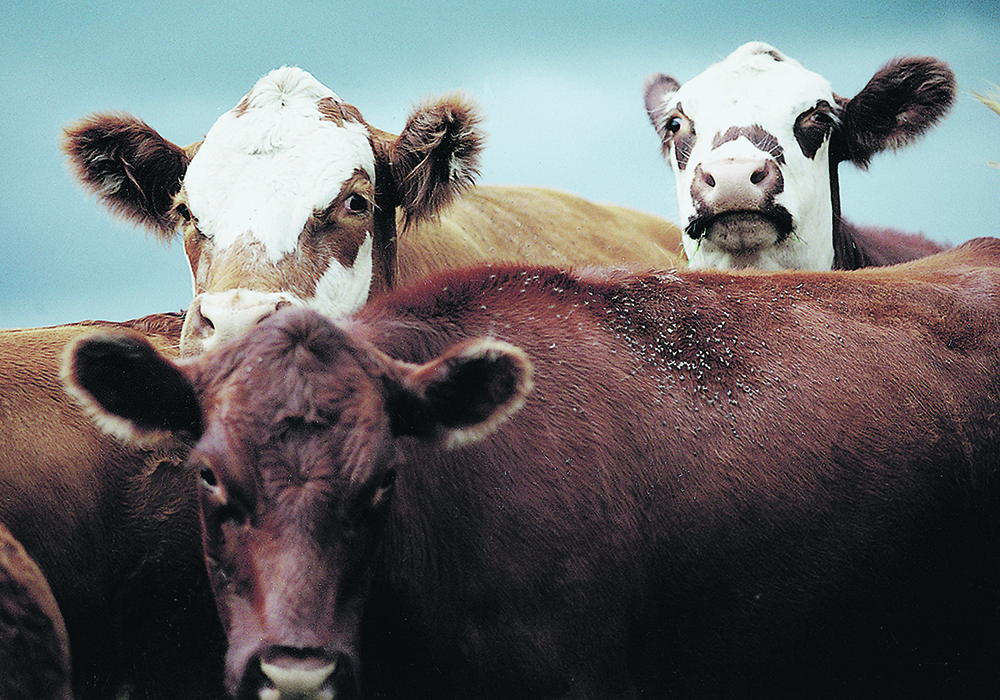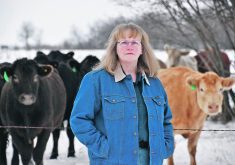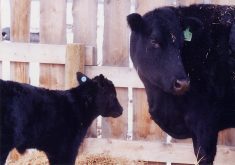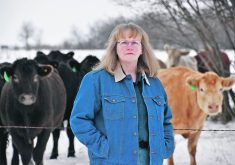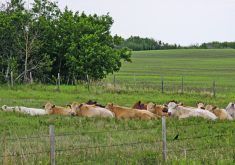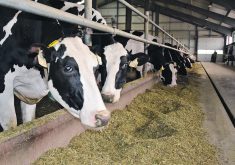Livestock specialists say the disease is a deadly threat lurking in western Canadian cattle herds and is difficult to prevent
Glacier FarmMedia – There’s no cure for it, it can take years to show up and, once cattle get it, it’s a matter of time until they waste away and die.
It’s Johne’s disease, and experts are warning producers to take it more seriously.
Dr. Cheryl Waldner, professor with the University of Saskatchewan’s Western College of Veterinary Medicine, and Dr. Nadine Wohlgemuth, veterinarian with the Virden Animal Hospital, put the illness in their crosshairs during the Manitoba Beef and Forage Conference in Portage la Prairie on Oct. 30.
Read Also

Feds propose overhaul of chronic wasting disease control program
Chronic Wasting disease control program getting updated by Canadian Food Inspection Agency with feedback encouraged from producers.
Johne’s disease, also known as paratuberculosis, is a chronic infection that gradually thickens the intestines of cattle, hindering nutrient absorption. As it progresses, cattle lose weight. They have chronic diarrhea and eventually die.
“We’re hard-pressed to find areas in Canada that don’t have some element of a Johne’s problem because most of them have expanded with outside cattle and, as they expanded with outside cattle, they brought it in,” Waldner said.
The producer may lose a cow to the disease or to culling before they’ve recovered their production costs. The illness may also cause lighter weaning weights or longer periods before rebreeding.
A Johne’s-infected cow will wean calves 50 pounds lighter, on average, than its healthy counterparts, the BCRC says.
The replacement cost of lost stock, especially in purebred operations, can be a serious hit, Waldner said. In some cases, producers may be able to recoup some expense through slaughter value of an infected animal, but many are too diseased to be sold.
Johne’s is hard to diagnose, especially during its early stages. There are no reliable vaccines or treatments.
Once in a herd, it can also be challenging to eliminate, requiring strict biosecurity measures to prevent spread through contaminated colostrum or infected breeding animals.
“As we bring cattle into our herds from other herds, we bring in a risk of disease with them, regardless of how careful we are. There’s no way to test for everything. There’s no way to know for sure,” Waldner said.
By the time a farmer knows there is a problem, the disease has often gained a foothold.
Calves typically contract the infection early in life. They’ll ingest the Johne’s-causing bacteria through colostrum, milk or manure from an infected cow. After that, the disease lurks undetected for years until visible signs appear.
The animal is generally two to six years old before it has bouts or continual issues with diarrhea, and may lose weight despite otherwise looking healthy and eating normally.
“They don’t run a fever, they look pretty good, other than the fact that they just waste away,” Waldner said.
“And some of those cows, it could take a couple of months. Some of those cows, a couple of weeks. I’ve seen them just disappear, literally, just sort of melt away in front of you.”
Research by the BCRC suggests that one to two per cent of mature beef cows in Western Canada, in about five per cent of herds, are infected. In dairy, they suggest the figures are higher. It’s estimated that two to nine per cent of dairy cows are affected and the disease is present in 70 per cent of herds.
“The higher incidence rate in dairy herds may be related to differences in calf management and because beef cattle generally range over larger areas and have less exposure to other cattle’s feces than dairy cattle,” the BCRC notes.
Wohlgemuth has seen firsthand the devastation that Johne’s disease can have in Manitoba herds. In 2009, a purebred operation with a herd of 250 cows that calved in February had its first case of Johne’s disease after a two-year-old bull they had sold died of it.
That fall, fecal samples were collected at pregnancy checks on mature cows. The samples were sent for fecal culture, at $50 per test, and the results took several months. That made it difficult to cull positive animals and their daughters. Two cows tested positive.
In 2011, another cow died on-farm with clinical signs of Johne’s disease and tested positive.
On another 250-head commercial operation, with February-to-April calving, a producer noticed weaning weights had dropped for the previous two to three years and calves had more health issues.
In 2015, fecal samples collected at that farm on the entire herd led to 10 positive results for Johne’s. All positive cows and their daughters were culled after confirmation with PCR tests. The following fall, fecal samples showed 21 positive cows and five suspected positive cases, and all positive cows and daughters were culled.
In fall 2017, fecal samples again showed six positive and two suspected cases of Johne’s, and a purchased mature bull also tested positive. The animals were culled. In 2018, the producer noticed improved calf health in spring, and fecal testing in the fall showed no positive cases.
But in 2019, the disease reared its head again. The farm found three positives, two in the following year and none in 2021. The producer chose not to test in 2022 and 2023, but will collect samples this year.
The cost of testing has risen to $90 per pooled sample and $83 per single sample.
Wohlgemuth also has personal experience with the disease. In fall 2022, she purchased a three-year-old bull for her 200-head commercial operation that later showed clinical signs.
“I never thought I’d have a single Johne’s case. I stopped buying replacement heifers about eight years ago because I didn’t want Johne’s, and the only thing we purchase is bulls, and I’m careful where I buy bulls. I ask a lot of questions,” Wohlgemuth said.
Her herd was tested and all animals were negative. This spring, another purchased bull tested positive. All bulls two years and older were tested in fall, 10 in total, and all tested positive.
With few other options, the bulls were used for the breeding season and re-tested this fall. Five were positive for Johne’s.
Now, Wohlgemuth is worried about the rest of her herd. Spring runoff flows through the bull pen and into the cow pens on her farm.
“Now, we’re testing the cow herd too.”

Fecal testing, while not perfect, can help manage an infection, Waldner said.
“The best test is probably fecal tests that are done and processed … on individual animals. The next best option is collecting fecal samples, and Manitoba Agriculture will do these for you at a pretty reasonable cost.”
For a farm with 10 years of infection, the best blood testing regimen includes PCR tests, in which all cows are tested every six months, but that is the most expensive option.
Producers could also do a PCR test every six months and pool five samples for testing. Another option is to PCR test only cows with four previous negative tests.
PCR tests can be conducted on all cows every 24 months, or on all cows every 12 months, where five samples are pooled for testing. Yet another option is to PCR test 50 per cent of all cows every 12 months, or test only cows with four previous negative tests and use a pooled sample. Cows can also be given ELISA blood tests every 12 months.
The BCRC has a Johne’s Testing Decision Tool on its website that was developed by a team under Waldner. The free, interactive tool aims to help producers and veterinarians assess different testing scenarios and options and better visualize potential management problems.
“You can work with your veterinarian to go in, and you can run an experiment. You can customize it for the type of testing you want to try and for the number of cattle you have and for how you manage your herd, how you might want to do your testing,” Waldner said.
Wohlgemuth hopes every producer takes the threat of Johne’s seriously and acts to protect their herds and their bottom lines.
“This is something that is going to get ugly. I’m pretty diligent, and it got by me.”


